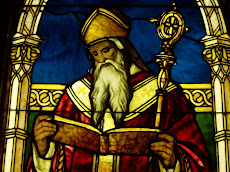I very much doubt it . . . I feel certain that he would not have preached to us of a God who would be appeased by the cruel sacrifice of a tortured body . . . I cannot accept either the hypothesis that the appalling death of Jesus was a sacrifice in the eyes of God for the sins of the world, or that God, in the shape of his son, tortured himself for our redemption. I can only confess that, in my hearth of hearts, I find such religious ideas to be amongst the least attractive in the whole of anthropology. To me, they belong to a quite different philosophy - different psychology - from that of the religion that Jesus taught." (quoted on pl. 111)I was struck by how similar this objection is to Brian McLaren's and Steve Chalke's and those of feminist and liberal theologians of recent years. How does Stott reply?
Stott notes that the cross was at the core of the apostolic proclamation as described by Luke in the Book of Acts. Stott points out that there are five sermons by Peter (Acts 2:14-39, 3:12-36, 4:8-12, 5:29-32 and 10:34-43) and five by Paul (Acts 13:16-41, 14:15-17, 17:2-3 and 22-31, and 28:23-31). Stott then reconstructs the core of their proclamation as follows:
Jesus was a man who was accredited by God through miracles and anointed by the Spirit to do good and to heal. Despite this, he was crucified through the agency of wicked men, though also by God's purpose according to the Scriptures that the Messiah must suffer. Then God reversed the human verdict on Jesus by raising him from the dead, also according to the Scriptures, and as attested by the apostolic eyewitnesses. Next God exalted him to the place of supreme honour as Lord and Saviour. He now possesses full authority both to save those who repent, believe and are baptized in his name, bestowing on them the forgiveness of sins and the gift of the Spirit, and to judge those who reject him. (p. 33)Stott is concerned to show that the doctrine of the atonement was preached from the very beginning and was not a later doctrinal development, which is why he is concentrating here on Acts, as opposed to the epistles. Noting that a full-scale doctrine of atonement is missing, he points out that Luke is careful to record of both Peter and Paul that they used the term "tree" in describing the cross. Paul says to the synagogue congregation in Pisidian Antioch that when the people and rulers of Jerusalem "had carried out all that was written about him, they took him down from the tree." (Acts 13:29)
Both Peter and Paul used other ways of referring to the means of death: Paul speaks of his sufferings and his execution, while Peter speaks of Jesus' crucifixion. So their references to "tree" and his having been "hanged" on it must have theological significance. In Deuteronomy 21:22-23 instructions are given for the burial of a hanged man before nightfall "because anyone who is hung on a tree is under God's curse." The apostles were quite aware of the law and could have hushed up or at least discretely not referred openly to the manner of Jesus' death. Instead, they trumpeted it with no apparent sense of shame.
They must have understood the curse under which Jesus suffered to have been our curse, which is what both apostles teach clearly in their later letters. (eg. Gal. 3:13, I Pet. 2:24) so in the very earliest preaching of the apostles we see the interpretation of the cross as atoning and substitutionary.
It seems to me to be obvious, although Stott does not mention it, that in so doing the apostles were interpreting the words of Jesus at the Last Supper "this cup is the new covenant in my blood . . . this is my body broken for you." In the end the apostles were preaching a Gospel that originates with Jesus himself.





No comments:
Post a Comment